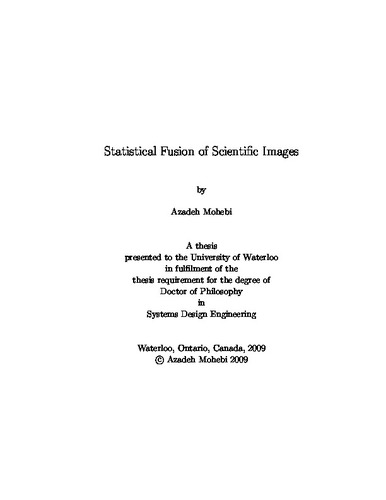| dc.description.abstract | A practical and important class of scientific images are the 2D/3D
images obtained from porous materials such as concretes, bone, active
carbon, and glass. These materials constitute an important class
of heterogeneous media possessing complicated
microstructure that is difficult to
describe qualitatively. However, they are not totally
random and there is a mixture of organization and randomness
that makes them difficult to characterize and study.
In order to study different
properties of porous materials, 2D/3D high resolution samples are
required. But obtaining high resolution samples usually requires
cutting, polishing and exposure to air, all of which affect the
properties of the sample. Moreover, 3D samples obtained by Magnetic
Resonance Imaging (MRI) are very low resolution and noisy. Therefore,
artificial samples of porous media are required to be generated
through a porous media reconstruction
process. The recent contributions in the reconstruction task are either only based on a prior model, learned from statistical features of real high resolution training data, and generating samples from that model, or based on a prior model and the measurements.
The main objective of this thesis is to some up with a statistical data fusion framework by which different images of porous materials at different resolutions and modalities are combined in order to generate artificial samples of porous media with enhanced resolution. The current super-resolution, multi-resolution and registration methods in image processing fail to provide a general framework for the porous media reconstruction purpose since they are usually based on finding an estimate rather than a typical sample, and also based on having the images from the same scene -- the case which is not true for porous media images.
The statistical fusion approach that we propose here is based on a Bayesian framework by which a prior model learned from high resolution samples are combined with a measurement model defined based on the low resolution, coarse-scale information, to come up with a posterior model. We define a measurement model, in the non-hierachical and hierarchical image modeling framework, which describes how the low resolution information is asserted in the posterior model. Then, we propose a posterior sampling approach by which 2D posterior samples of porous media are generated from the posterior model. A more general framework that we propose here is asserting other constraints rather than the measurement in the model and then propose a constrained sampling strategy based on simulated annealing to generate artificial samples. | en |

